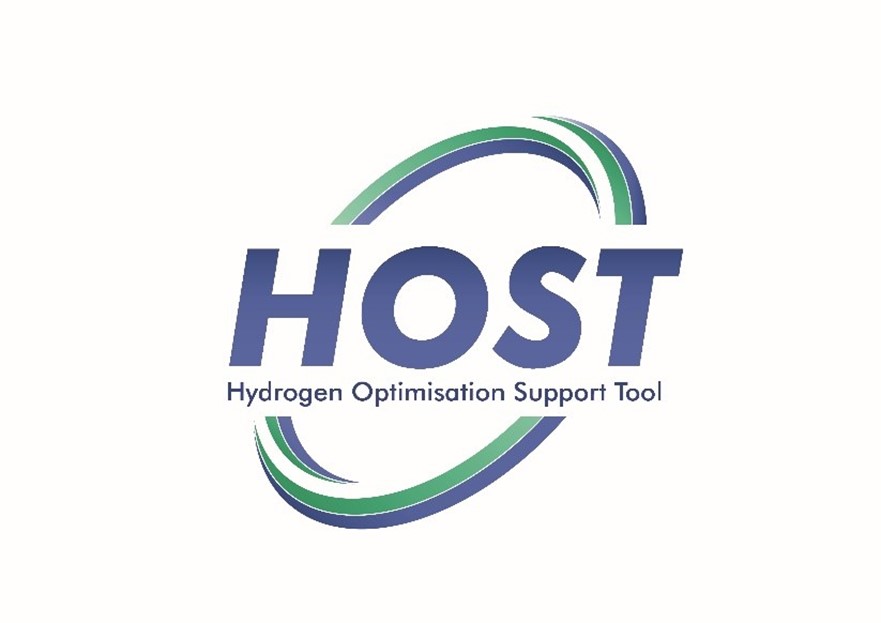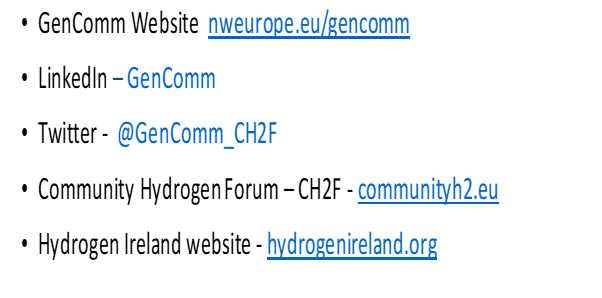Energy Coupling
Hydrogen Optimisation - enhanced integration of electrolysis and the use of the oxygen and heat energy vectors in addition to the primary H2 energy into industrial process and into the energy system delivering greater efficiencies and effectiveness and systems integration.
As we strive to meet the climate targets set for 2030 and 2050 we must strive to get the best out of every last green electron or molecule. We must optimise every energy step to ensure we achieve efficiencies and effectiveness.
In the GenComm project we are developing ‘energy coupling’ as part of our hydrogenewables projects. Energy Coupling seeks to optimise the ancillary products of electrolysis including oxygen and heat and optimise the electrolyser system-downstream process through innovative energy integration. In addition to the main ‘trunk’ of the green energy process – producing green hydrogen we are seeking to optimise the electrolyser outputs in using hydrogen and oxygen to assist the greening of industrial processes, utilities, and others.
Essentially energy coupling optimises all energy outputs from the electrolysis process
- hydrogen for the energy powering the process
- oxygen for enhancing the process
- heat for process additionality or use in heat networks
As we strive to utilise this in our sustainability endeavours and to tackle climate change and inequality the energy coupling approach opens new opportunities. As we all strive to tackle the climate and energy crises our research has identified incredible energy coupling opportunities to increase energy efficiencies and effectiveness and ultimately make our world a much better place to live, work and enjoy. Our goals in delivering green hydrogen also include optimising all the energy vector and by products, thereby increasing our efforts to deliver a sustainable Earth.
Essentially, we are focussing on 5 key project areas where we can valorise/optimise the triple energy vectors of H2, O2 and heat
- Steel processing
- Chemical processing
- Healthcare
- Agricultural
- Wastewater processing
In our GenComm Green H2 hubs, Wind to H2 in Ireland, Bio to H2 in Scotland and Solar to H2 in Germany we have demonstrated economically viable hydrogen production and its role in providing clean power to mobility, industry and transport. These hubs are the demo site for hydrogen valleys and are the technical blueprints of how Europe can implement the ambition of the “Hydrogen Strategy for a climate-neutral Europe”.
Our next step in the Energy Coupling process is to demonstrate how enhanced integration of electrolysis and the use of the oxygen and heat energy vectors in addition to the primary H2 energy into industrial process and into the energy system will achieve greater efficiencies and effectiveness.
Our research is seeking to optimise the electrolysis by-products and demonstrate an improved economic and environmental business case of green H2 production.
Traditionally during the electrolysis process oxygen and heat are ‘waste’ by products and released or vented into the atmosphere. Approximately 30% of electricity input in the electrolysis process is lost as waste heat. With our partners in Slovenia, Germany, and the Ukraine we are working with glass, chemical, utilities and the process industries sector investigating the value in utilising the oxygen and waste heat,
As with the GenComm hydrogen hubs we anticipate these projects will pave the way for further large-scale integration of electrolyser systems into either industrial application. We expect these projects will become the blueprints for ‘energy coupling,’ energy systems integration where the oxygen and heat integration will be utilised to improve the efficiency, effectiveness, and economics of green hydrogen as part of our energy solutions to achieve net zero.
Building on the techno economic tools the Decision Support Tool (DST) and the Enabling Support Tool (EST) developed within the GenComm project we anticipate that this work will enhance the efficiency of the electrolysis process, optimise the electrolyser system integration and lead onto the development of the Hydrogen Optimisation Support Tool (HOST)
Paul McCormack
GenComm Programme Manager
GenComm main animation-2023 | Interreg NWE (nweurope.eu)


